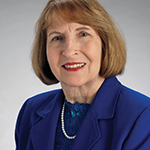“If you want to do the whole thing by video stream, you can,” she says. “I would wake up at 10 a.m., work out for an hour or so, get some lunch and then video stream for six hours and then go to happy hour. It actually was not that bad.”
Undoubtedly, video streaming is the most highly disruptive technology that medical education has ever encountered since the days of Dr. Cannon. In the span of just a few years, the relevance of the live medical lecture in the daily life of the average medical student has all but vanished.
In addition to providing immediate online access to course material, medical schools shy away from enforcing mandatory attendance policies, thus providing little incentive for students to attend class. They have created a new category, best described as the stay-at-home student.
It may be time to contrast our new way of teaching with another format, the business school approach. Most graduate business schools require attendance at all lectures.
Most students don’t see any relevance in sitting in class with their peers or posing live questions to the lecturer. Years ago, it seemed that inviting a few patients to class would captivate the audience. It still does, but the draw of having live patients has faded. Although attendance rises, it rarely exceeds more than 50%. If live patients can’t turn out first- or second-year medical students, what does? Recently, I prepared a 90-minute rheumatology course review for our Year 2 class that was held four days prior to their exam on this subject. There was going to be ample opportunity for questions to be answered and for ambiguities to be clarified. Despite the seemingly high value of such a session, less than 25% of the class bothered to show up. I was left wondering what the remaining 75% of the class must be doing on a cold, drizzly December weeknight in Boston, just days away from their finals.
Perhaps I am missing the point. Do I have this all wrong? Two students at the Johns Hopkins Medical School in Baltimore recently highlighted the merits of video streaming and how big data can enhance medical teaching.6 They observed that Facebook and Netflix are managed by more sophisticated algorithms than the tools used to learn medicine. These data-driven companies have capitalized on the modern “attention economy,” and they measure success through such metrics as “daily active users” and “time on site.” They analyze thousands of data points on each individual to develop personalized recommendations, among other techniques, that keep users engaged. The authors, both steeped in substantial computer science training, propose that similar metrics be applied not only to lectures, but also to all forms of medical teaching. For example, data analytics could help identify which parts of a lecture students find most confusing by analyzing which segments are rewound and replayed the most. Computer algorithms could create better context for teaching by identifying previous course material and linking it to current lectures.


